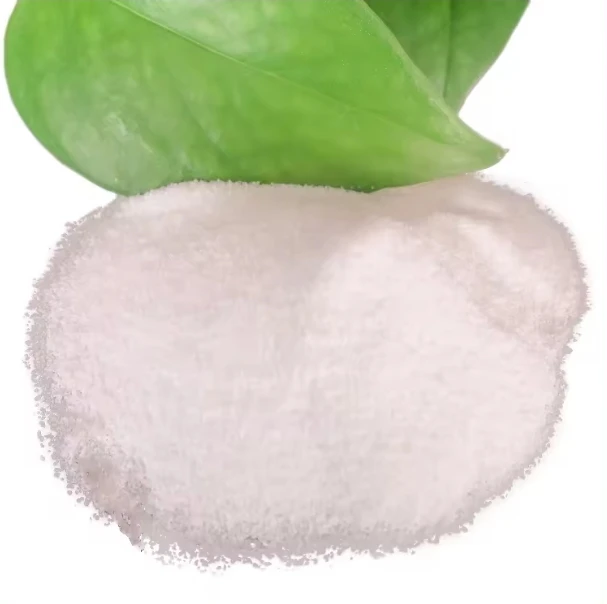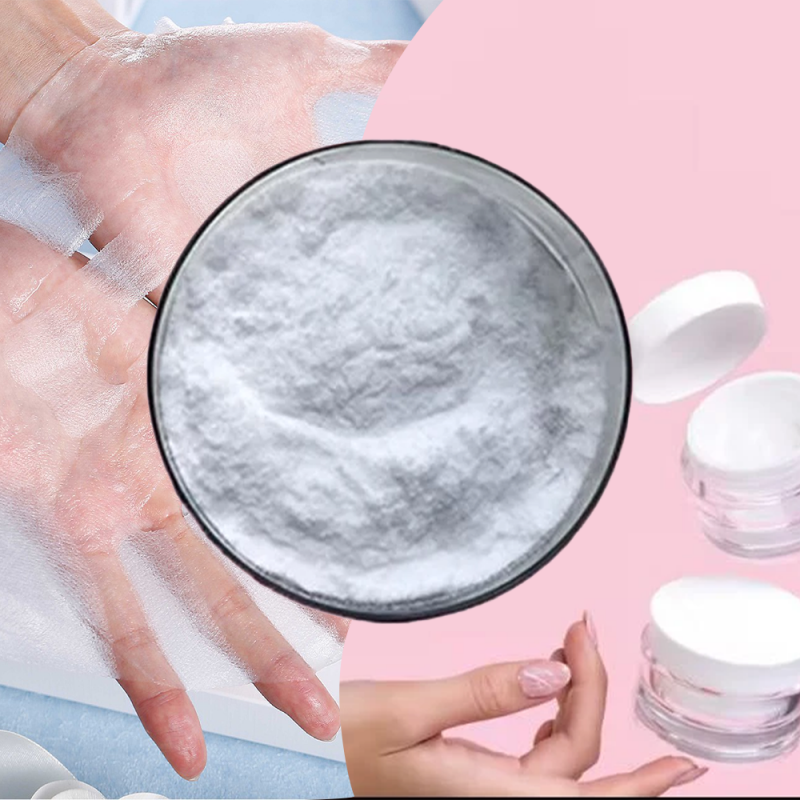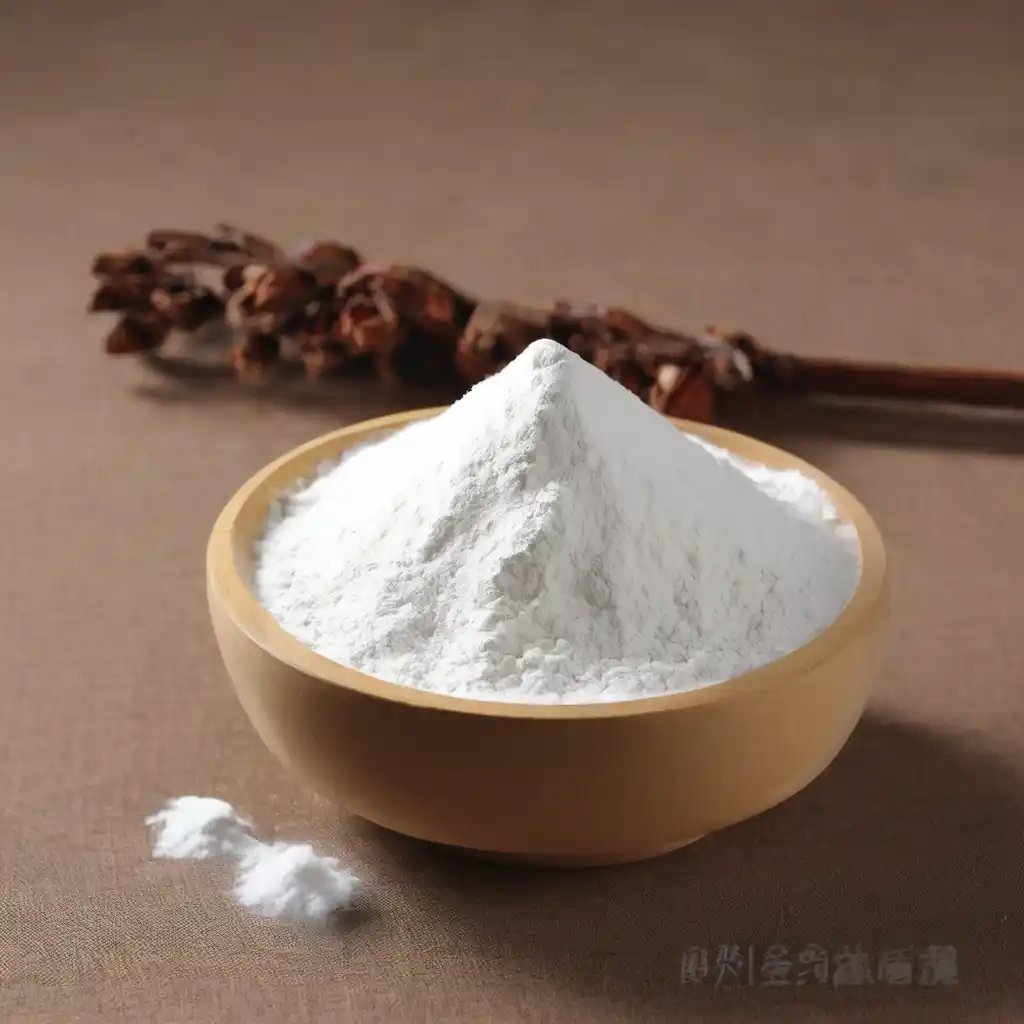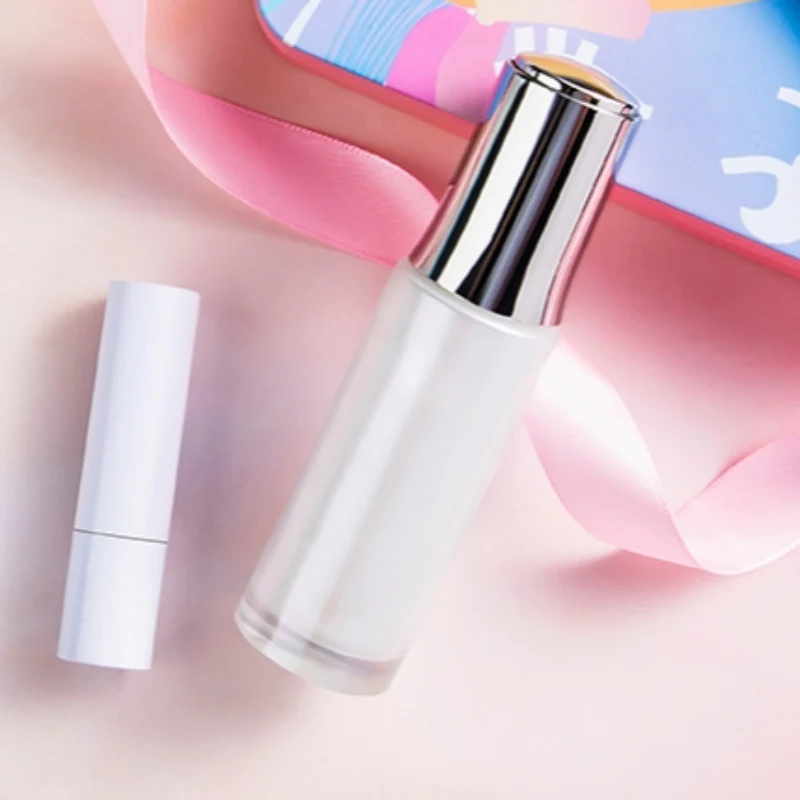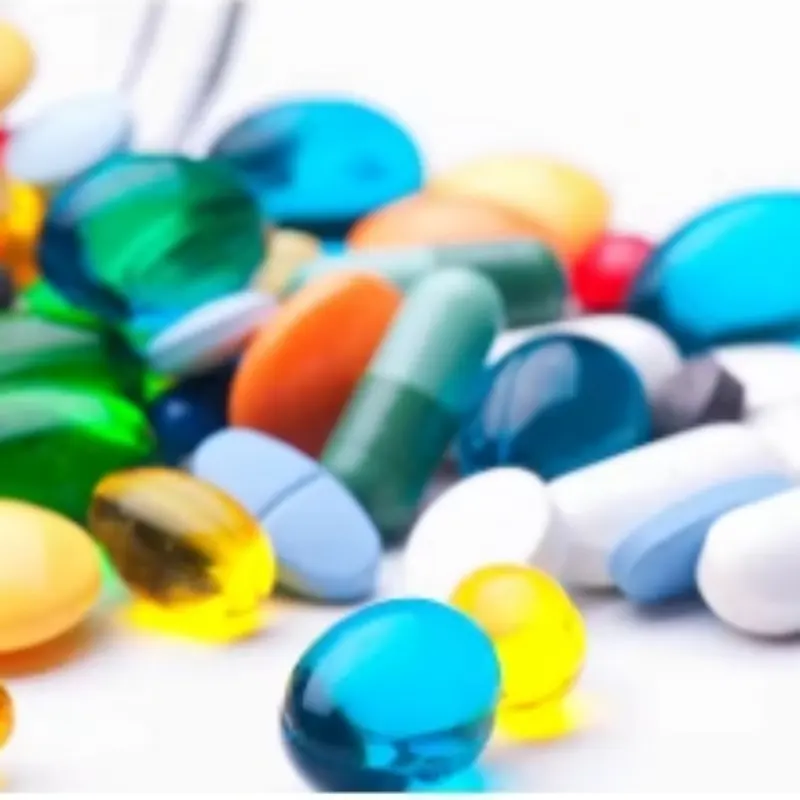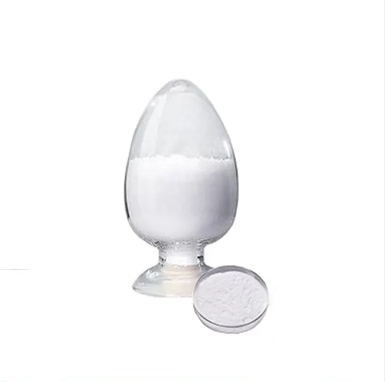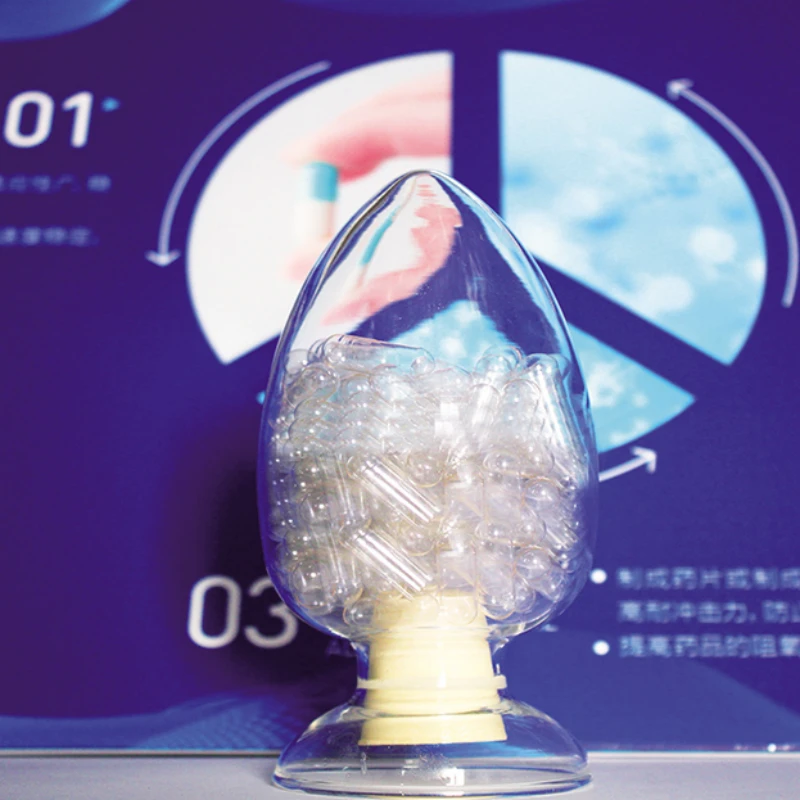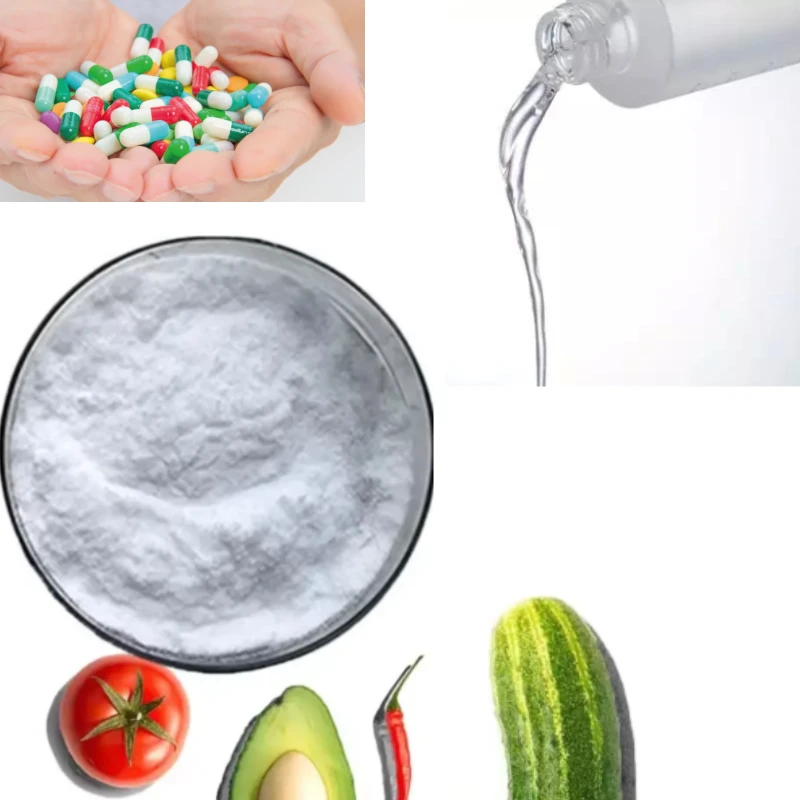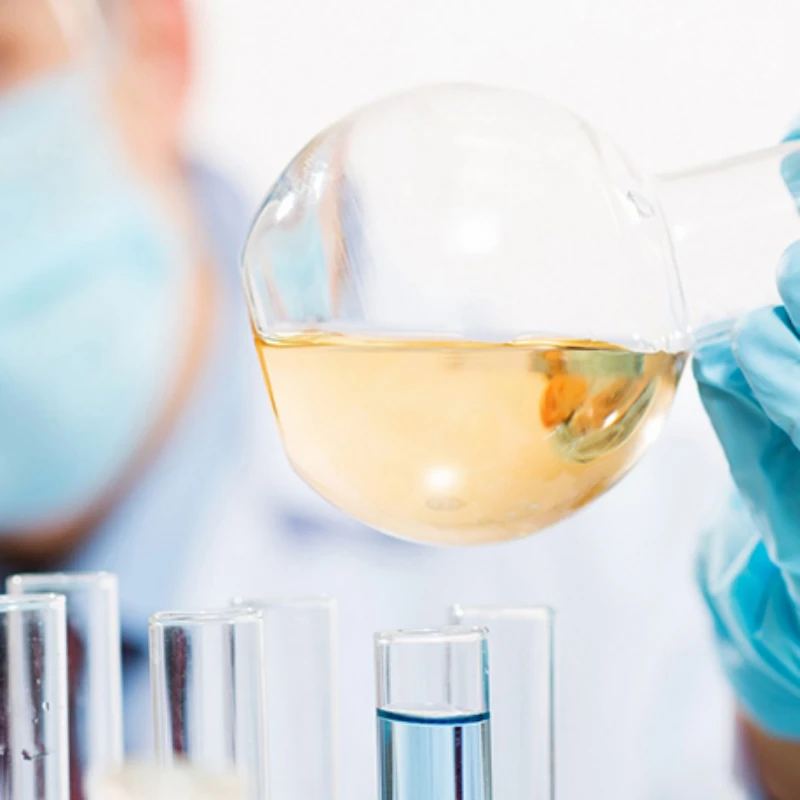Pullulan vs HPMC: A Comparative Analysis in Pharmaceutical and Nutraceutical Applications
Introduction
The pharmaceutical and nutraceutical industries constantly seek innovative and effective excipients to improve the formulation and delivery of drugs and supplements. Two prominent excipients in this regard are Pullulan and Hydroxypropyl Methylcellulose (HPMC). Both have unique properties that make them suitable for various applications, but they also have distinct differences. This article explores the characteristics, benefits, and applications of Pullulan and HPMC, providing a comprehensive comparison to guide formulators in choosing the appropriate excipient for their needs.
Pullulan: An Overview
Pullulan is a polysaccharide polymer produced by the fermentation of starch by the fungus Aureobasidium pullulans. It consists of maltotriose units connected by α-(1→4) and α-(1→6) glycosidic bonds, creating a unique structure that imparts several desirable properties.
Properties and Benefits
Biodegradability and Biocompatibility: Pullulan is biodegradable and biocompatible, making it an excellent choice for environmentally friendly and safe pharmaceutical applications.
Film-Forming Capability: One of Pullulan's standout features is its exceptional film-forming ability. The films are transparent, tasteless, and odorless, with excellent oxygen barrier properties. This makes Pullulan ideal for coating tablets, capsules, and creating edible films.
Solubility and Stability: Pullulan is highly soluble in water, which facilitates its use in various aqueous formulations. Additionally, it exhibits good stability over a range of temperatures and pH levels, enhancing its versatility.
Low Viscosity: Even at high concentrations, Pullulan solutions maintain low viscosity, which is advantageous for processes that require smooth flow and easy handling.
Non-Toxicity: As a natural polymer, Pullulan is non-toxic and hypoallergenic, minimizing the risk of adverse reactions in consumers.
Applications
Pharmaceutical Coatings: Pullulan’s film-forming ability makes it an excellent coating agent for tablets and capsules, providing moisture protection and controlled release characteristics.
Edible Films: Pullulan is used to create edible films and strips, such as breath fresheners and oral hygiene products.
Encapsulation: It is employed in encapsulating flavors, fragrances, and active ingredients, enhancing stability and controlled release.
Dietary Supplements: In the nutraceutical industry, Pullulan is used in the formulation of various supplements due to its non-toxic and hypoallergenic nature.
Hydroxypropyl Methylcellulose (HPMC): An Overview
HPMC is a semi-synthetic polymer derived from cellulose, the most abundant natural polymer. It is produced by chemically modifying cellulose with methyl and hydroxypropyl groups, resulting in a versatile excipient with a wide range of applications.
Properties and Benefits
Film-Forming Capability: Like Pullulan, HPMC exhibits excellent film-forming properties. The films are flexible, transparent, and provide effective moisture and oxygen barriers.
Controlled Release: HPMC is widely used in controlled release formulations. Its ability to form gels and matrices upon hydration allows for the sustained release of active ingredients, improving therapeutic efficacy.
Thermal Gelation: One unique property of HPMC is its ability to undergo thermal gelation. When heated in water, it forms a gel, which can be advantageous in certain pharmaceutical formulations.
Viscosity Modulation: HPMC solutions can range from low to high viscosity, depending on the molecular weight and concentration. This flexibility allows formulators to tailor the viscosity to specific needs.
Non-Ionic Nature: As a non-ionic polymer, HPMC is compatible with a wide range of other ingredients and does not interact with ionic drugs, enhancing formulation stability.
Applications
Controlled Release Formulations: HPMC is extensively used in matrix tablets and other controlled release systems, providing consistent and prolonged drug release.
Ophthalmic Solutions: Due to its viscoelastic properties, HPMC is used in artificial tears and other ophthalmic preparations to provide lubrication and moisture retention.
Food and Supplements: In the food industry, HPMC is used as a thickener, emulsifier, and stabilizer. In nutraceuticals, it acts as a binder and encapsulating agent.
Topical Formulations: HPMC is employed in creams, gels, and lotions, where its film-forming and moisture-retention properties enhance the product's effectiveness.
Comparative Analysis
Film-Forming Properties
Both Pullulan and HPMC exhibit excellent film-forming capabilities, making them suitable for coating applications. However, Pullulan films tend to have superior oxygen barrier properties compared to HPMC films, which is critical for protecting sensitive ingredients from oxidation. On the other hand, HPMC films offer better moisture barrier properties, which can be advantageous for protecting hygroscopic substances.
Solubility and Viscosity
Pullulan is highly soluble in water and maintains low viscosity even at high concentrations, facilitating ease of processing. HPMC, while also water-soluble, offers a range of viscosities depending on its molecular weight, providing more flexibility in tailoring the rheological properties of formulations.
Biodegradability and Biocompatibility
Both polymers are biodegradable and biocompatible. Pullulan, being a natural polysaccharide, is more likely to be perceived as environmentally friendly, which can be a significant marketing advantage. HPMC, although semi-synthetic, is also considered safe and biocompatible, widely accepted in pharmaceutical and food applications.
Controlled Release Capabilities
HPMC is well-known for its controlled release capabilities, particularly in matrix formulations. Its ability to form gels upon hydration allows for the gradual release of active ingredients, enhancing therapeutic outcomes. Pullulan does not inherently possess this property, making HPMC the preferred choice for controlled release applications.
Application Flexibility
While both excipients have broad applications, HPMC’s non-ionic nature and viscosity modulation make it more versatile in a wider range of formulations, from controlled release tablets to topical gels and ophthalmic solutions. Pullulan’s unique properties, such as its superior oxygen barrier and low viscosity, make it ideal for specific applications like edible films and protective coatings.
Safety and Regulatory Status
Both Pullulan and HPMC are regarded as safe for use in pharmaceutical and food products. They have been extensively studied and have received regulatory approval in various regions, including the FDA and EFSA. However, the perception of Pullulan as a natural ingredient might appeal more to consumers looking for "clean label" products.
What are the main differences between Pullulan and HPMC?
Pullulan and Hydroxypropyl Methylcellulose (HPMC) are both widely used excipients in pharmaceutical and nutraceutical applications, but they have distinct differences that make them suitable for various uses.
1. Origin and Composition:
Pullulan is a natural polysaccharide produced by the fermentation of starch by the fungus Aureobasidium pullulans. It consists of maltotriose units linked by α-(1→4) and α-(1→6) glycosidic bonds.
HPMC is a semi-synthetic polymer derived from cellulose. It is chemically modified with methyl and hydroxypropyl groups, giving it unique properties.
2. Film-Forming Properties:
Pullulan excels in film-forming capabilities, creating transparent, tasteless, and odorless films with excellent oxygen barrier properties. This makes it ideal for coating tablets and creating edible films.
HPMC also forms flexible, transparent films, but with superior moisture barrier properties compared to Pullulan, making it beneficial for protecting hygroscopic substances.
3. Solubility and Viscosity:
Pullulan is highly soluble in water and maintains low viscosity even at high concentrations, facilitating easy processing and application in aqueous formulations.
HPMC offers a range of viscosities depending on its molecular weight and concentration. This flexibility allows formulators to tailor the viscosity to specific needs, making HPMC suitable for diverse applications.
4. Biodegradability and Biocompatibility:
Both Pullulan and HPMC are biodegradable and biocompatible, ensuring they are safe for pharmaceutical and nutraceutical use. However, Pullulan, being a natural polymer, is often perceived as more environmentally friendly.
5. Controlled Release Capabilities:
HPMC is well-known for its controlled release capabilities, especially in matrix formulations. It forms gels upon hydration, allowing for the sustained release of active ingredients, which is crucial for improving therapeutic efficacy.
Pullulan does not inherently possess controlled release properties, making HPMC the preferred choice for such applications.
6. Application Flexibility:
Pullulan is particularly advantageous for applications requiring excellent oxygen barrier properties, low viscosity, and a natural, biodegradable polymer. It is widely used in edible films, protective coatings, and encapsulation of flavors and active ingredients.
HPMC is highly versatile due to its viscosity modulation and thermal gelation properties. It is extensively used in controlled release tablets, ophthalmic solutions, and various topical and oral formulations.
7. Safety and Regulatory Status:
Both Pullulan and HPMC have been extensively studied and approved by regulatory agencies such as the FDA and EFSA for use in pharmaceuticals and food products. The perception of Pullulan as a natural ingredient may appeal more to consumers seeking "clean label" products.
In summary, while both Pullulan and HPMC offer unique benefits, their distinct properties make them suitable for different applications. Pullulan's excellent oxygen barrier properties, low viscosity, and natural origin make it ideal for coatings and edible films. In contrast, HPMC's controlled release capabilities, viscosity modulation, and versatility make it a preferred choice for matrix tablets, ophthalmic solutions, and various topical and oral formulations. Understanding these differences helps formulators select the appropriate excipient based on the specific requirements of their products.
How are Pullulan and HPMC used in controlled release formulations?
Controlled release formulations are designed to release active ingredients over an extended period, enhancing therapeutic efficacy and patient compliance. Pullulan and Hydroxypropyl Methylcellulose (HPMC) play significant roles in these formulations, each with distinct mechanisms and applications.
Pullulan in Controlled Release:
Pullulan is primarily valued for its film-forming ability, but its role in controlled release formulations is more limited compared to HPMC. Pullulan's main contributions to controlled release are through its use in coatings and encapsulation:
Coating Agent: Pullulan can be used to coat tablets and capsules, providing a barrier that modulates the release of the active ingredient. Its excellent oxygen barrier properties help protect sensitive ingredients from oxidation, ensuring stability over time.
Encapsulation: Pullulan is used to encapsulate flavors, fragrances, and active ingredients, enhancing their stability and providing a controlled release. The encapsulation process involves forming a film around the active ingredient, which slowly dissolves in the gastrointestinal tract, releasing the active compound.
Despite these applications, Pullulan's use in controlled release is less prominent due to its lack of inherent gel-forming properties.
HPMC in Controlled Release:
HPMC is a cornerstone excipient in controlled release formulations due to its versatile properties:
Matrix Tablets: One of the most common uses of HPMC in controlled release is in matrix tablets. When exposed to aqueous environments, HPMC swells and forms a gel layer around the tablet. This gel layer controls the rate of drug release by acting as a diffusion barrier. The drug is released through the hydrated gel matrix at a controlled rate, providing sustained therapeutic levels over an extended period.
Hydrophilic Matrix Systems: HPMC is often used in hydrophilic matrix systems, where it forms a viscous gel upon hydration. This gel layer controls the release of the active ingredient by diffusion and erosion mechanisms. The release rate can be modulated by adjusting the viscosity grade and concentration of HPMC.
Multilayer Tablets: HPMC can be used in multilayer tablet formulations, where different layers contain varying concentrations of the polymer and the active ingredient. This design allows for a more complex release profile, such as an initial burst release followed by sustained release.
Floating Tablets: HPMC is used in floating tablets designed to remain buoyant in the stomach, providing a prolonged release of the active ingredient in the upper gastrointestinal tract. The gel-forming property of HPMC ensures that the tablet stays afloat and releases the drug at a controlled rate.
Mechanisms of Controlled Release:
Diffusion: In HPMC-based matrix tablets, the drug diffuses through the gel layer formed upon hydration. The viscosity and thickness of the gel layer regulate the diffusion rate, controlling the release of the drug.
Erosion: The hydrated gel layer of HPMC gradually erodes, releasing the encapsulated drug. The erosion rate can be tailored by adjusting the polymer's concentration and molecular weight.
Swelling: HPMC swells upon contact with water, forming a gel that controls drug release. The degree of swelling can be manipulated by selecting different grades of HPMC.
Advantages of Using HPMC in Controlled Release:
Flexibility: HPMC offers a wide range of viscosities, allowing formulators to tailor the release profile to specific therapeutic needs.
Compatibility: As a non-ionic polymer, HPMC is compatible with a broad spectrum of active ingredients and excipients, ensuring stability and efficacy.
Safety: HPMC is biocompatible and non-toxic, making it safe for use in pharmaceutical formulations.
In conclusion, while Pullulan has limited applications in controlled release due to its lack of gel-forming properties, HPMC is highly versatile and widely used in various controlled release formulations. HPMC’s ability to form hydrophilic matrices, swell, and control drug diffusion and erosion makes it an indispensable excipient in achieving sustained and controlled drug release, improving therapeutic outcomes and patient compliance.
What are the environmental impacts of using Pullulan and HPMC?
The environmental impact of excipients like Pullulan and Hydroxypropyl Methylcellulose (HPMC) is an important consideration in the pharmaceutical and nutraceutical industries. Understanding their biodegradability, sourcing, production processes, and disposal can provide insights into their environmental footprint.
Pullulan:
Biodegradability: Pullulan is a natural polysaccharide that is readily biodegradable. Microorganisms in soil and water can decompose Pullulan, minimizing its environmental impact when disposed of. This biodegradability makes Pullulan an environmentally friendly choice, reducing concerns about long-term accumulation in ecosystems.
Sourcing and Production: Pullulan is produced by the fermentation of starch by the fungus Aureobasidium pullulans. The starch used as a raw material can be sourced from renewable resources such as corn, potatoes, or other plant-based sources. The fermentation process itself is relatively clean, relying on microbial activity rather than harsh chemical reactions.
Sustainability: Since Pullulan is derived from renewable plant sources and produced through microbial fermentation, it is considered sustainable. The production process generates minimal waste and does not involve toxic chemicals, contributing to a lower environmental footprint.
Disposal: Products made from Pullulan, such as edible films and coatings, can be safely disposed of in natural environments. They decompose without releasing harmful substances, making them suitable for applications where biodegradability is essential.
HPMC:
Biodegradability: HPMC is also biodegradable, although its biodegradation rate may be slower compared to Pullulan due to its semi-synthetic nature. HPMC is derived from cellulose, which is a natural and biodegradable polymer, but the chemical modifications it undergoes (methylation and hydroxypropylation) can affect its degradation rate.
Sourcing and Production: HPMC is derived from cellulose, primarily sourced from wood pulp or cotton linters. The production process involves chemical modifications to cellulose, which can include the use of solvents and reagents. While these processes are well-regulated and optimized to minimize environmental impact, they are more complex and resource-intensive compared to the microbial fermentation used for Pullulan.
Sustainability: The sustainability of HPMC depends on the sourcing of the cellulose raw material and the efficiency of the production process. Sustainable forestry practices and the use of renewable cellulose sources can enhance the sustainability of HPMC. However, the chemical modification steps add complexity and potential environmental concerns.
Disposal: HPMC-based products can be disposed of safely in natural environments, although they may decompose at a slower rate compared to natural polymers like Pullulan. Proper waste management practices can help mitigate any potential environmental impact.
Environmental Considerations:
Renewability:
Pullulan: As a fermentation product derived from renewable plant-based starches, Pullulan's production leverages natural and renewable resources. This contributes to its low environmental footprint.
HPMC: The cellulose used to produce HPMC is also renewable, typically sourced from wood pulp or cotton linters. Sustainable forestry practices and responsible sourcing are critical to minimizing the environmental impact of HPMC production.
Production Impact:
Pullulan: The microbial fermentation process used to produce Pullulan is generally considered environmentally benign. It does not require harsh chemicals, and the by-products are often biodegradable or can be repurposed.
HPMC: The production of HPMC involves chemical modification steps that may include the use of solvents and reagents. While these processes are optimized to be as efficient and clean as possible, they are inherently more complex and resource-intensive than microbial fermentation. Efforts to minimize waste and improve efficiency are important to reduce the environmental impact.
End-of-Life:
Pullulan: Products made from Pullulan, such as edible films and coatings, are designed to decompose naturally. They break down into harmless substances, contributing to a circular economy where materials are reused and recycled.
HPMC: While HPMC is biodegradable, the rate of decomposition can vary. Ensuring that HPMC products are disposed of in environments conducive to biodegradation can help minimize their long-term environmental impact.
Summary:
In summary, both Pullulan and HPMC have relatively low environmental impacts, but they achieve this through different means. Pullulan, being a natural polysaccharide produced through fermentation, has a straightforward production process that leverages renewable resources and results in biodegradable products. This makes it particularly attractive from an environmental perspective.
HPMC, on the other hand, is a semi-synthetic polymer derived from natural cellulose. Its production involves chemical modifications, which add complexity and potential environmental concerns. However, with sustainable sourcing and efficient production practices, the environmental impact of HPMC can be minimized.
Overall, the choice between Pullulan and HPMC can also be influenced by environmental considerations. Formulators looking for a natural, biodegradable option with a simple production process might prefer Pullulan. Those needing a versatile excipient with specific properties for controlled release and other applications might opt for HPMC, while still considering the importance of sustainable sourcing and waste management practices to mitigate environmental impacts.
How do Pullulan and HPMC compare in terms of their applications in the food industry?
Pullulan and Hydroxypropyl Methylcellulose (HPMC) are versatile excipients that find extensive applications in the food industry. Their unique properties make them valuable for various functions, from improving texture and stability to enhancing the sensory qualities of food products.
Pullulan in the Food Industry:
1. Edible Films and Coatings:
Pullulan: Pullulan is widely used to create edible films and coatings. These films are transparent, tasteless, and odorless, making them ideal for packaging applications where the appearance and flavor of the food product should not be altered. Pullulan films provide excellent oxygen barrier properties, which are crucial for preserving the freshness and extending the shelf life of food products. Common applications include the coating of fruits and vegetables, confectionery, and ready-to-eat meals.
2. Moisture Barrier:
Pullulan: While Pullulan excels as an oxygen barrier, it also offers moisture barrier properties. This dual functionality makes it valuable in protecting food products from both oxidation and moisture absorption. For example, Pullulan coatings on dried fruits and nuts help maintain their crispiness and prevent spoilage caused by moisture.
3. Encapsulation:
Pullulan: Pullulan is used in the encapsulation of flavors, aromas, and active ingredients. The encapsulation process helps protect sensitive compounds from environmental factors such as heat, light, and moisture. It also allows for controlled release, enhancing the sensory experience and functional benefits of the food product. For instance, encapsulated flavors can provide a burst of flavor when the product is consumed, improving overall consumer satisfaction.
4. Dietary Supplements:
Pullulan: In the nutraceutical segment of the food industry, Pullulan is used to produce capsules for dietary supplements. Its non-toxic, hypoallergenic nature and biodegradability make it an attractive choice for health-conscious consumers. Pullulan capsules are preferred for their ability to dissolve quickly and release the active ingredients efficiently.
HPMC in the Food Industry:
1. Thickening and Gelling Agent:
HPMC: HPMC is widely used as a thickening and gelling agent in various food products. Its ability to form gels and increase viscosity makes it suitable for sauces, dressings, soups, and desserts. HPMC can improve the texture and mouthfeel of these products, enhancing their overall quality. For example, HPMC is used in ice creams and dairy products to create a creamy and smooth texture.
2. Emulsification:
HPMC: HPMC acts as an emulsifier, helping to stabilize emulsions in food products. This is particularly useful in products like salad dressings, mayonnaise, and beverages, where oil and water phases need to remain mixed. By preventing separation, HPMC improves the stability and appearance of these products.
3. Fat Replacement:
HPMC: In low-fat and reduced-calorie food products, HPMC is used as a fat replacer. Its ability to mimic the texture and mouthfeel of fats without adding calories makes it an excellent ingredient for health-conscious consumers. HPMC is used in baked goods, dairy products, and processed foods to reduce fat content while maintaining desirable sensory properties.
4. Fiber Enrichment:
HPMC: As a cellulose derivative, HPMC can be used to increase the dietary fiber content of food products. Adding HPMC to baked goods, snacks, and cereals can enhance their nutritional profile by providing additional fiber, which is beneficial for digestive health.
Summary:
Both Pullulan and HPMC offer unique advantages in the food industry. Pullulan is particularly valued for its film-forming and encapsulation capabilities, providing excellent oxygen and moisture barriers while enhancing the shelf life and sensory qualities of food products. It is also favored in dietary supplements for its safety and biodegradability.
HPMC, on the other hand, is versatile in its applications as a thickening, gelling, and emulsifying agent. Its ability to improve texture, stability, and mouthfeel makes it indispensable in various food formulations. Additionally, HPMC's role as a fat replacer and fiber enrichment agent aligns with the growing demand for healthier, low-calorie food options.
In conclusion, the choice between Pullulan and HPMC in the food industry depends on the specific requirements of the application. Understanding their distinct properties and benefits allows food formulators to optimize their products for quality, stability, and consumer appeal.
What are the regulatory considerations for using Pullulan and HPMC in pharmaceutical and food products?
Regulatory considerations play a critical role in the approval and use of excipients like Pullulan and Hydroxypropyl Methylcellulose (HPMC) in pharmaceutical and food products. These considerations ensure the safety, efficacy, and quality of the products that reach consumers.
Regulatory Status:
Pullulan:
Pharmaceuticals: Pullulan is generally recognized as safe (GRAS) by major regulatory agencies, including the U.S. Food and Drug Administration (FDA). Its use in pharmaceutical applications is well-documented, and it complies with the standards set by pharmacopeias such as the United States Pharmacopeia (USP) and the European Pharmacopoeia (EP). Pullulan's natural origin and non-toxic profile make it a preferred choice for various pharmaceutical formulations, including coatings and capsules.
Food Products: In the food industry, Pullulan is also recognized as GRAS by the FDA. The European Food Safety Authority (EFSA) has evaluated and approved Pullulan for use in food products. Its application in edible films, coatings, and encapsulation of flavors and active ingredients is widely accepted. The safety and biodegradability of Pullulan further support its use in food products aimed at health-conscious consumers.
HPMC:
Pharmaceuticals: HPMC is extensively used in pharmaceutical formulations and is approved by regulatory agencies such as the FDA, EFSA, and other international bodies. It is listed in the USP and EP, ensuring its compliance with stringent quality standards. HPMC's versatility, non-toxicity, and controlled release properties make it a valuable excipient in various drug delivery systems, including matrix tablets, ophthalmic solutions, and topical formulations.
Food Products: HPMC is recognized as GRAS by the FDA and approved for use in food products by the EFSA. It is commonly used as a thickening, gelling, and emulsifying agent, as well as a fat replacer in low-calorie foods. The safety profile of HPMC, coupled with its functionality, supports its widespread use in the food industry.
Quality and Safety Standards:
1. Compliance with Pharmacopeias:
Pullulan: Must meet the specifications outlined in the relevant pharmacopeias, such as USP and EP. These specifications include parameters like purity, microbial limits, and physical properties.
HPMC: Also must comply with pharmacopeial standards, ensuring consistent quality and safety. These standards cover aspects like viscosity, purity, and the absence of harmful contaminants.
2. Manufacturing Practices:
Good Manufacturing Practices (GMP): Both Pullulan and HPMC must be manufactured following GMP guidelines. These guidelines ensure that the production processes are controlled and monitored to produce high-quality excipients free from contamination and variability.
Quality Control (QC): Rigorous QC measures are essential to verify the consistency and quality of Pullulan and HPMC. Analytical testing and documentation are part of the QC processes to ensure that each batch meets the required standards.
3. Safety Evaluations:
Toxicological Studies: Regulatory approval for Pullulan and HPMC involves comprehensive toxicological evaluations. These studies assess the potential for adverse effects, ensuring that the excipients are safe for human consumption at the intended use levels.
Allergenicity and Sensitization: Evaluations for potential allergenic and sensitizing effects are also conducted. Both Pullulan and HPMC have been found to be non-toxic and hypoallergenic, supporting their safety profiles.
Regulatory Submissions:
Dossiers and Documentation: For approval, detailed dossiers must be submitted to regulatory agencies. These dossiers include information on the chemical composition, manufacturing process, quality control measures, toxicological data, and intended use of the excipients.
Post-Market Surveillance: Once approved, continuous monitoring and reporting of any adverse events or quality issues are required to ensure ongoing compliance and safety.
Summary:
The regulatory considerations for Pullulan and HPMC are comprehensive, covering their approval, quality standards, manufacturing practices, and safety evaluations. Both excipients are widely accepted and approved by major regulatory agencies for use in pharmaceutical and food products. Their compliance with stringent quality and safety standards ensures that they can be used confidently in formulations aimed at enhancing the stability, efficacy, and sensory qualities of the final products.
Understanding these regulatory aspects is crucial for formulators and manufacturers to ensure that their products meet the required standards and deliver safe and effective solutions to consumers.
How do Pullulan and HPMC contribute to the solubility and bioavailability of active ingredients in pharmaceuticals?
Solubility and bioavailability are critical factors in the effectiveness of pharmaceutical formulations. Pullulan and Hydroxypropyl Methylcellulose (HPMC) play significant roles in enhancing these properties, thereby improving the therapeutic outcomes of active pharmaceutical ingredients (APIs).
Pullulan's Contribution:
1. Solubility Enhancement:
Pullulan: Pullulan is a highly water-soluble polysaccharide. When used in formulations, it can improve the solubility of poorly water-soluble drugs. This enhancement is particularly beneficial for drugs that need to be quickly absorbed in the gastrointestinal tract. Pullulan's low viscosity even at high concentrations facilitates the creation of highly concentrated solutions or dispersions, improving the solubility of APIs.
2. Fast Dissolution:
Pullulan: Due to its excellent water solubility, Pullulan-based films and coatings dissolve rapidly upon contact with aqueous environments. This property is advantageous for oral disintegrating tablets (ODTs) and fast-dissolving films, where quick dissolution is necessary for rapid onset of action. The immediate release of the API can enhance bioavailability by ensuring that the drug is readily available for absorption.
3. Encapsulation and Protection:
Pullulan: Pullulan is used to encapsulate APIs, protecting them from degradation by environmental factors such as moisture, light, and oxygen. This protection can enhance the stability of the drug, ensuring that it remains in its active form until it reaches the site of absorption. By maintaining the integrity of the API, Pullulan indirectly contributes to improved bioavailability.
HPMC's Contribution:
1. Solubility Enhancement:
HPMC: HPMC can enhance the solubility of poorly soluble drugs through various mechanisms, including solid dispersion techniques. By dispersing the API in an HPMC matrix, the drug is maintained in an amorphous state, which is more soluble than its crystalline counterpart. This approach can significantly improve the solubility and, consequently, the bioavailability of the API.
2. Controlled Release:
HPMC: HPMC is renowned for its controlled release properties. When used in matrix tablets, HPMC forms a gel barrier upon hydration. This barrier regulates the release rate of the API, ensuring a sustained and steady release over an extended period. Controlled release formulations can improve bioavailability by maintaining consistent drug levels in the bloodstream, reducing fluctuations that can affect therapeutic efficacy.
3. Mucoadhesive Properties:
HPMC: HPMC exhibits mucoadhesive properties, which can enhance the bioavailability of APIs by prolonging their residence time at the absorption site. For instance, in buccal or sublingual formulations, HPMC can help the API adhere to the mucosal tissues, allowing for better absorption and increased bioavailability.
4. Solubilization in Aqueous Solutions:
HPMC: HPMC's ability to increase the viscosity of aqueous solutions can aid in the solubilization of hydrophobic APIs. By creating a more favorable environment for the dissolution of poorly soluble drugs, HPMC helps to improve their solubility and absorption.
Synergistic Use:
Combining Pullulan and HPMC:
In some formulations, Pullulan and HPMC can be used together to leverage their complementary properties. Pullulan can provide immediate release and excellent film-forming capabilities, while HPMC can offer controlled release and enhanced solubility. This combination can result in a formulation that provides both immediate and sustained release, optimizing the bioavailability of the API.
Summary:
Pullulan and HPMC are valuable excipients that contribute significantly to the solubility and bioavailability of active pharmaceutical ingredients. Pullulan's high solubility, rapid dissolution, and protective encapsulation improve the availability of APIs for absorption. HPMC's ability to enhance solubility through solid dispersion, controlled release properties, and mucoadhesive capabilities ensures that APIs are released in a manner that maximizes their therapeutic potential. By understanding the unique contributions of these excipients, formulators can design pharmaceutical products that offer improved efficacy and patient outcomes.
Conclusion
Pullulan and HPMC are both exceptional excipients, each with its unique set of properties and benefits. The choice between them depends largely on the specific requirements of the formulation and the desired characteristics of the final product.
Pullulan is particularly advantageous for applications requiring excellent oxygen barrier properties, low viscosity, and a natural, biodegradable polymer. It shines in the creation of edible films, moisture-sensitive coatings, and encapsulation of flavors and active ingredients.
HPMC, with its versatile viscosity range, thermal gelation properties, and exceptional controlled release capabilities, is highly valued in matrix tablets, ophthalmic solutions, and various topical and oral formulations. Its flexibility and non-ionic nature make it a go-to excipient for a broad spectrum of applications.
Ultimately, the decision to use Pullulan or HPMC should be guided by the specific needs of the formulation, regulatory considerations, and consumer preferences. By understanding the strengths and limitations of each excipient, formulators can optimize their products for performance, safety, and consumer appeal.
